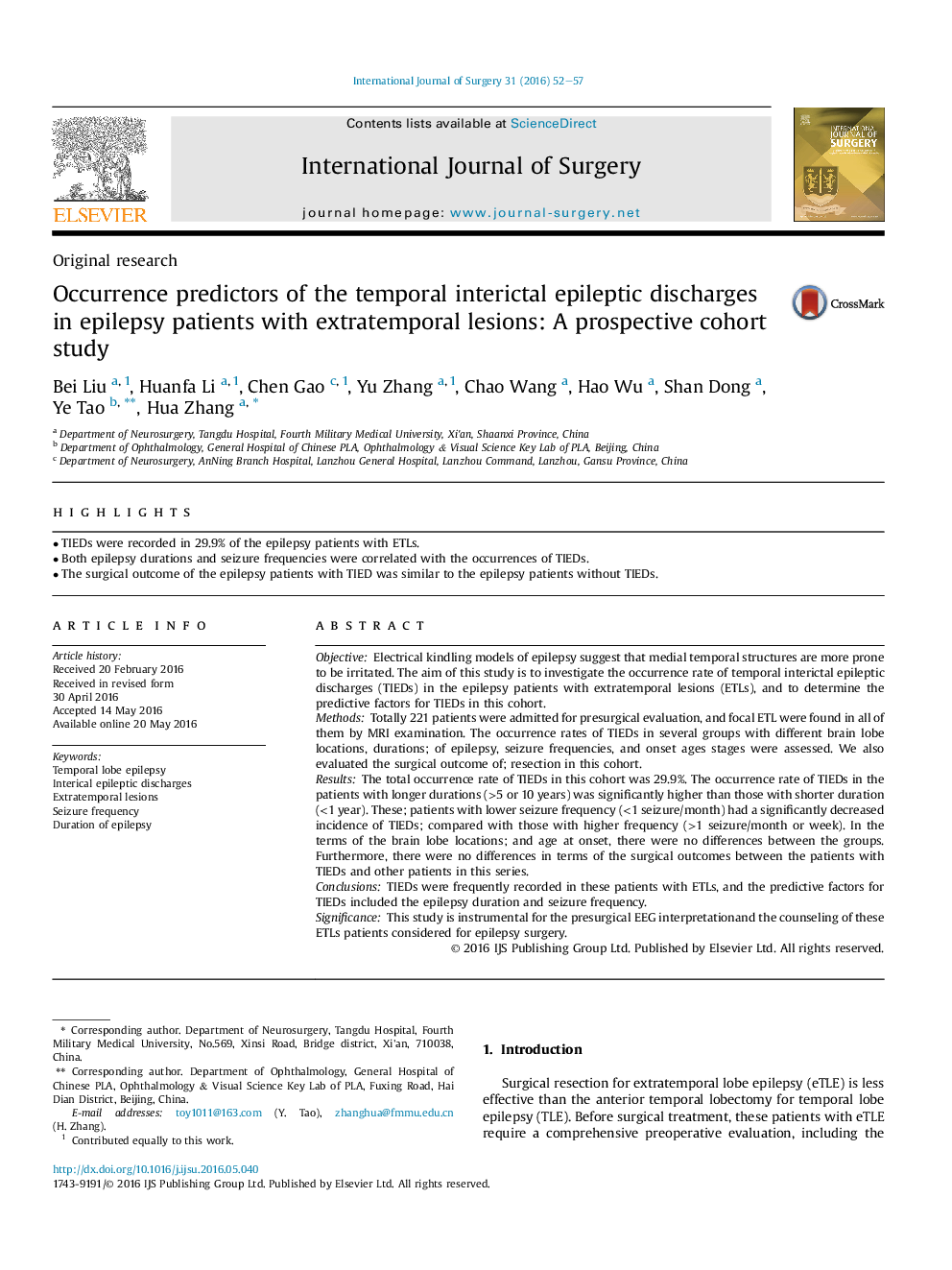| Article ID | Journal | Published Year | Pages | File Type |
|---|---|---|---|---|
| 4285401 | International Journal of Surgery | 2016 | 6 Pages |
•TIEDs were recorded in 29.9% of the epilepsy patients with ETLs.•Both epilepsy durations and seizure frequencies were correlated with the occurrences of TIEDs.•The surgical outcome of the epilepsy patients with TIED was similar to the epilepsy patients without TIEDs.
ObjectiveElectrical kindling models of epilepsy suggest that medial temporal structures are more prone to be irritated. The aim of this study is to investigate the occurrence rate of temporal interictal epileptic discharges (TIEDs) in the epilepsy patients with extratemporal lesions (ETLs), and to determine the predictive factors for TIEDs in this cohort.MethodsTotally 221 patients were admitted for presurgical evaluation, and focal ETL were found in all of them by MRI examination. The occurrence rates of TIEDs in several groups with different brain lobe locations, durations; of epilepsy, seizure frequencies, and onset ages stages were assessed. We also evaluated the surgical outcome of; resection in this cohort.ResultsThe total occurrence rate of TIEDs in this cohort was 29.9%. The occurrence rate of TIEDs in the patients with longer durations (>5 or 10 years) was significantly higher than those with shorter duration (<1 year). These; patients with lower seizure frequency (<1 seizure/month) had a significantly decreased incidence of TIEDs; compared with those with higher frequency (>1 seizure/month or week). In the terms of the brain lobe locations; and age at onset, there were no differences between the groups. Furthermore, there were no differences in terms of the surgical outcomes between the patients with TIEDs and other patients in this series.ConclusionsTIEDs were frequently recorded in these patients with ETLs, and the predictive factors for TIEDs included the epilepsy duration and seizure frequency.SignificanceThis study is instrumental for the presurgical EEG interpretationand the counseling of these ETLs patients considered for epilepsy surgery.
